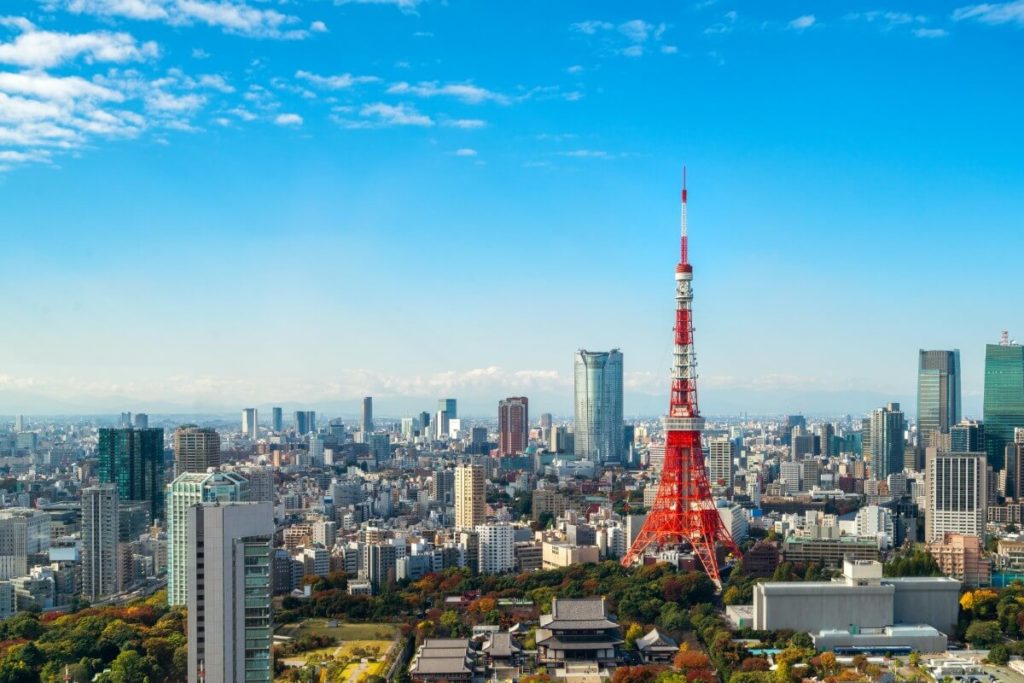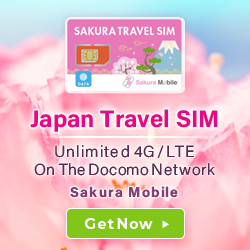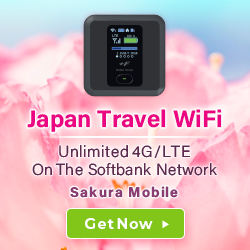Tokyo is overflowing with places to go and things to see and do. Even those who have lived in the city for many years have trouble deciding what to do with their days off simply because there is too much to choose from.
In this article, we have chosen some of the best locations for sightseeing and activities in Tokyo. Whether it is your first time in the city or you are a seasoned Tokyoite, you are guaranteed to find something that piques your interest.
We have separated everything into a few categories based on what you might want to see.
Let’s get started!
Have you booked your SIM card or pocket WiFi for your trip to Japan yet?
In Japan, you’ll want to be connected without missing out on high speed data and internet!
By reserving online before departing, you can
- Lower your rental fees
- Avoid stock shortages at the airport
To learn more about data and WiFi options for your trip, check out our products below.

Hello readers! Sakura Mobile is a SIM & WiFi service provider for international residents and tourists in Japan.
Our global editorial team living in Japan will introduce the charms of the country based on what we have actually experienced and felt.
Table of contents
Art and History
Tokyo has an image of being a hub for the newest technology, but we shouldn’t forget that Japan itself is a country rich in history.
We have gathered some of the must-visit places in Tokyo where you can learn more about Japan’s history and view some of its most unique creations.
1. Tokyo National Museum
View this post on Instagram
One of the biggest art museums in the world, Tokyo National Museum displays not only Japanese art but cultural objects and art collections from other parts of Asia.
The museum also features many limited-time exhibitions depending on the season, all complete with information translated to English and English audio guides.
Tokyo National Museum is well-known for having a collection of items that are hard to find elsewhere.
If you are interested in the history of samurai in Japan, you will be able to find samurai swords and armor on display. Some are made by Masamune, one of the most well-known Japanese swordsmiths.
Information
- Hours of operation: 9:30 am to 5:00 pm
- Admission fee: Adult – 1000 JPY, University student – 500 JPY, Under 18 or over 70 – Free
- Location: 10 minutes walk from the Park Gate of JR Ueno Station or the South Exit of Uguisudani Station
- Website: https://www.tnm.jp
2. Edo-Tokyo Museum
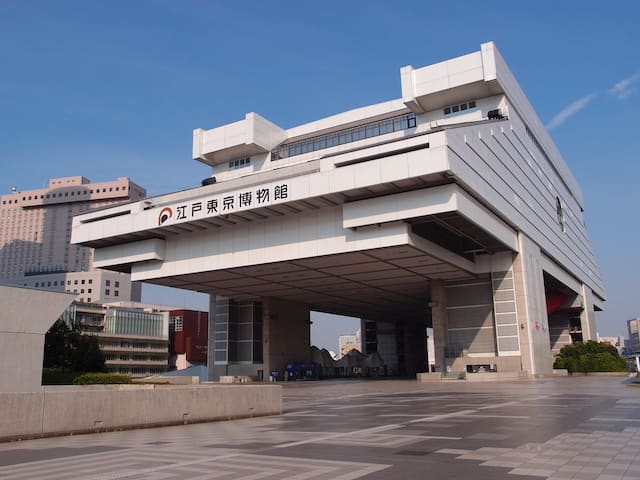
Established in 1993, the Edo-Tokyo Museum showcases the history and culture of the Edo period.
Letters written by the shogun, replicas of places like the Nihonbashi bridge, and a kabuki theater are just a few of the sights to see. If you are interested in how Tokyo came to be, we recommend visiting this museum.
You can participate in talks about Japanese history and culture, and even try out cultural activities. Free guides are only available from 1:10 pm to 2:45 pm, so be sure to make use of them while you can.
You can find guides in English, Chinese, and Korean among other languages.
Information
- Hours of operation: 9:30 am to 5:30 pm
- Closed on: New Year’s and Mondays (or Tuesday when national holidays fall on a Monday)
- Admission fee: Adult – 600 JPY, University student – 480 JPY, Middle/High school student, over 65 – 300 JPY, Elementary school student – Free
- Location: 3-minute walk from Ryogoku Station
- Website: https://www.edo-tokyo-museum.or.jp
3. Samurai Museum
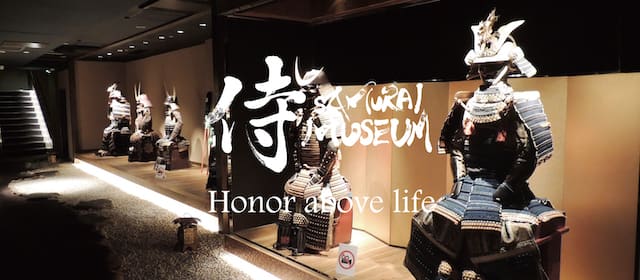
For those who want to know more about the samurai of Japan, we recommend that you visit the Samurai Museum. As you can most likely imagine, there are artifacts belonging to samurai such as helmets, armor, and swords on display.
However, you don’t have to just stop at looking at these items–at this museum, you can even try them on and take pictures.
For extra fees, you may also be interested in trying calligraphy or sword-wielding classes.
Information
- Hours of operation: 10:30 am to 9:00 pm
- Admission fee: Adult – 1900 JPY, Under 12 – 800 JPY, Under 3 – Free
- Location: 8-minute walk from the East Exit of JR Shinjuku Station
- Website: https://www.samuraimuseum.jp
4. The Imperial Palace
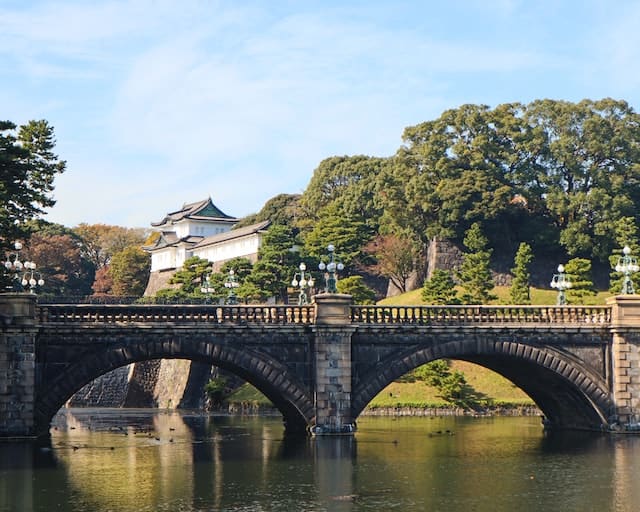
The Imperial Palace is where the emperor of Japan has been living since the Meiji era. The eastern garden of the estate is open to the public.
There aren’t many chances to enter the royal property, so we recommend taking advantage of the opportunity if you are in the area. You might enjoy taking a scenic walk from Tokyo station into the garden.
If you are curious and want to see more of the palace, a tour is offered that will take you to Nijubashi, the main iron gate (which is called “double bridge” because it was constructed twice, one on top of the other).
To go on this tour, however, you will have to apply through the Imperial Household Agency homepage.
Information
- Hours of operation: Depends on the season
- Admission fee: Free
- Closed on: National holidays, New Year’s, Sundays, and Mondays (or the following day when national holidays fall on a Monday)
- Location: 5-minute walk from Otemachi Station
- Website: https://sankan.kunaicho.go.jp
↑ Go back to the table of contents
Nature
Although Tokyo is known as the busiest metropolis in the world, there are also nature spots closer than you might think. The following are four of the most popular parks and areas with lots of green that you can find in Tokyo.
1. Yoyogi Park
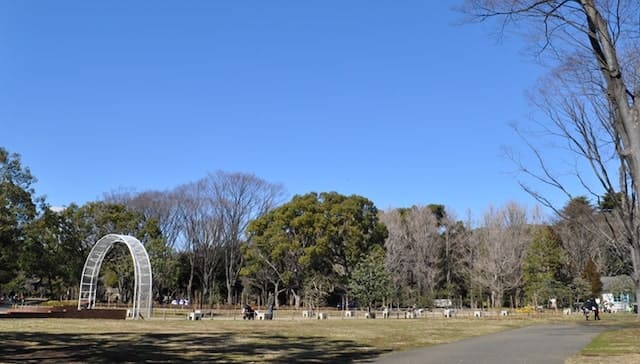
Originally a US military base, Yoyogi Park is one of the biggest parks in Tokyo.
When Tokyo hosted the 1964 Olympics, Yoyogi Park became an Olympic Village and was then established as a park.
It is a quick 5-minute walk from Harajuku station, making it very easy to access.
The park is so large that it would take you about 2 hours to walk around the entirety of it. If you are in Tokyo long-term, it is fun to watch the park change with the seasons.
There are also many events that take place within Yoyogi Park year-round like food festivals and concerts.
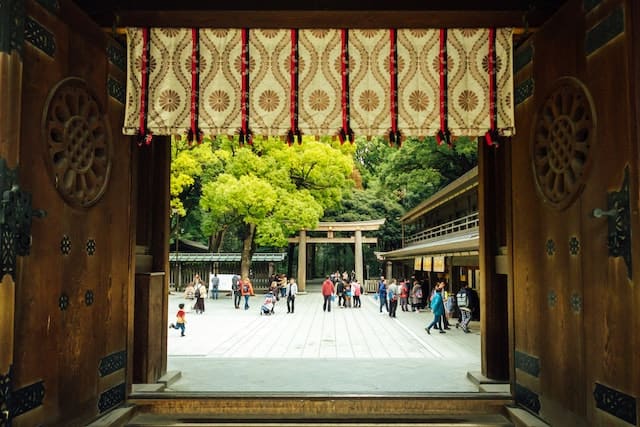
A well-known shrine in Tokyo, Meiji Jingu, is located next to Yoyogi Park.
Both establishments are big, so you could spend a whole day taking a walk around the area.
Information
- Open free to the public
2. Shinjuku Gyoen National Garden
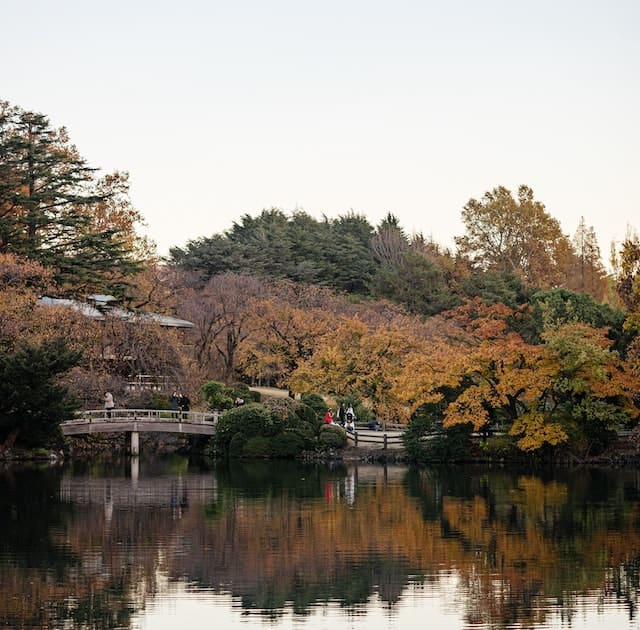
Shinjuku, which is arguably one of the busiest areas of Tokyo, actually has a quite tranquil park that is located about a 15-minute walk from the station.
You might feel like you are in a completely different world if you go from the bustling city streets of Shinjuku or Shibuya to Shinjuku Gyoen.
Shinjuku Gyoen is recommended for those looking to avoid large crowds because it does not get as crowded as Yoyogi Park. Inside the park, there is a beautiful lake, a French garden, and a Japanese garden.
When the sakura flowers bloom in the spring, Shinjuku Gyoen also makes a lovely area for the Japanese tradition of “hanami” (flower viewing).
Information
- Hours of operation: 9:00 am to 4:00 pm (subject to change)
- Closed on: New Year’s (12/29 to 1/3) and Monday (or Tuesday when national holidays fall on a Monday)
- Admission fee: Adult – 500 JPY, Over 65 – 250 JPY, High schooler – 250 JPY, Middle school and below – Free
3. Ueno Park
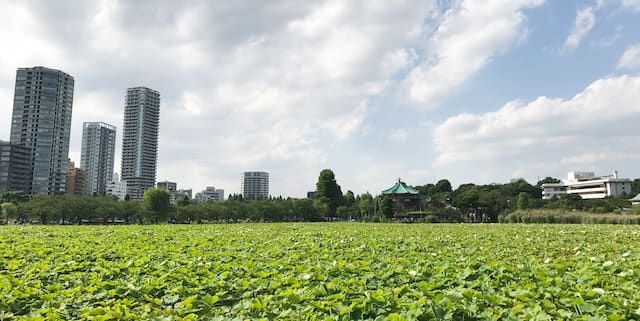
Home to Ueno Zoo, the National Museum of Western Art, the National Museum of Nature and Science, and the Tokyo National Museum, Ueno Park is known for the abundance of attractions just within the park.
You could spend a whole day visiting all the museums and seeing the sights that Ueno Park has to offer. It is located right outside of Ueno Station, making it very accessible to visitors.
It is recommended to visit the park in the springtime when the sakura blossoms are in full bloom, but you should also keep in mind that it is an extremely popular spot and will be crowded.
Because of the variety of activities, Ueno Park is a popular spot for families. Compared to other parts of the city, Ueno has a different feel from the intense nightlife so often associated with Shinjuku or Shibuya.
You will find that Ueno Park is a great place to relax while taking a nature walk.
Information
- Hours of operation: 5:00 am to 11:00 pm
- Admission fee: Free
4. Meguro River
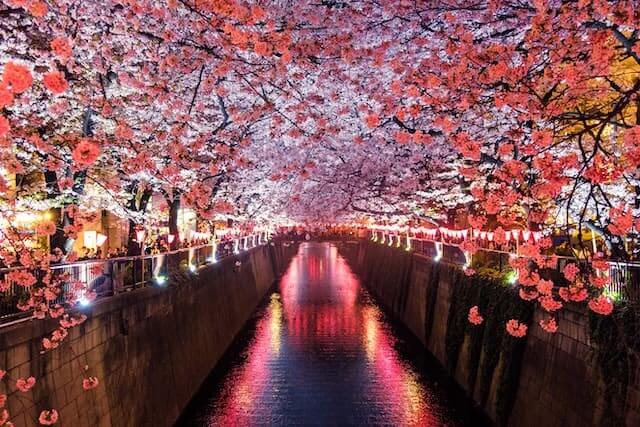
The Meguro River is one of the most popular hanami spots in Tokyo. Sakura trees line the river, creating a view that looks like a scene out of a movie when the sakura are in bloom.
They are lit up at night and there are many food vendors outside, making it a perfect place to take pictures or go on a night walk.
Even outside of sakura season, Meguro is known for its cute cafes and restaurants, so if you are looking for a place to grab a bite to eat, Meguro is a good place to look.
The Meguro River is crowded with couples and families on the weekends, but if you can visit on a weekday afternoon, you’ll find it is quiet and relaxed.
Information
- Open free to the public
↑ Go back to the table of contents
Famous landmarks
Next, we will be introducing some of the landmarks that we recommend visiting when you are in Tokyo. These are places that are popular among tourists and residents alike.
1. Sumo Stadium (Ryogoku Kokugikan)
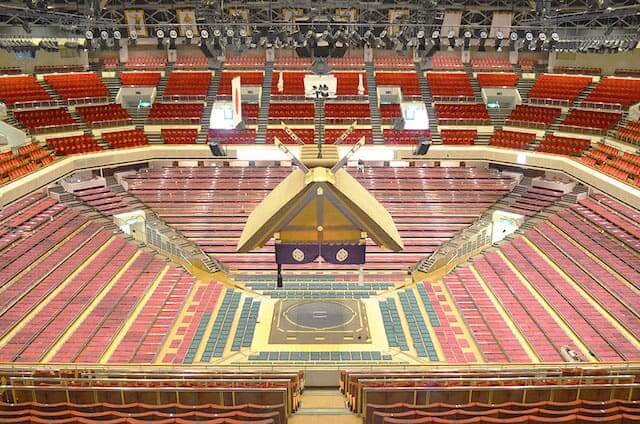
One of the things that might come to your mind when you think of Japan is sumo wrestling. If you are interested in the sport, you should definitely make it a point to go see a match.
Even if you don’t know too much about sumo, it would be worth checking out Ryogoku Kokugikan if you are in Tokyo during the right season.
You are going to need to reserve a ticket through the official site ahead of time if you want to go to see a sumo tournament. The tickets might sell out, so you should make it a point to be quick when booking.
The price will change depending on the type of seat, better seats cost around 20,000 JPY. The most inexpensive tickets you can find hover around 3,800 JPY.
There are also box seats, but they require you to sit on your knees for long periods of time, which can be uncomfortable for those who are not used to it.
Even during the off-season, it is possible to go to the stadium and watch the sumo wrestlers practice.
Information
- Tickets: Start at 3,800 JPY
- Location: 2-minute walk from Ryogoku Station
- Website: https://www.sumo.or.jp
2. Tokyo Skytree
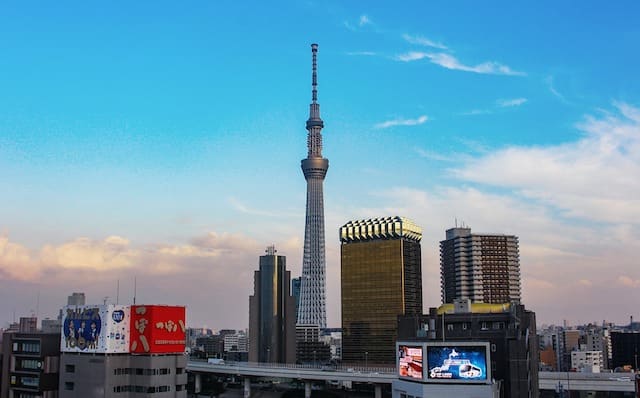
Tokyo Skytree is the second tallest tower in the world and is a well-known landmark nationwide. If you are looking for beautiful night-time views of Tokyo, we recommend that you visit Tokyo Skytree.
Although tickets can be a little pricey, the view is certain to make up for it. It is recommended that you visit around sunset to experience the view and activities on all the different floors.
You can find a shopping mall and an abundance of restaurants surrounding Tokyo Skytree as well.
Information
- Tickets: Adult 2,100 ~ 3,500 JPY (Price changes depending on the day/advance ticket vs same-day)
- Location: Connected to Tokyo Skytree Station
- Website: https://www.tokyo-skytree.jp
3. Shibuya Scramble Crossing
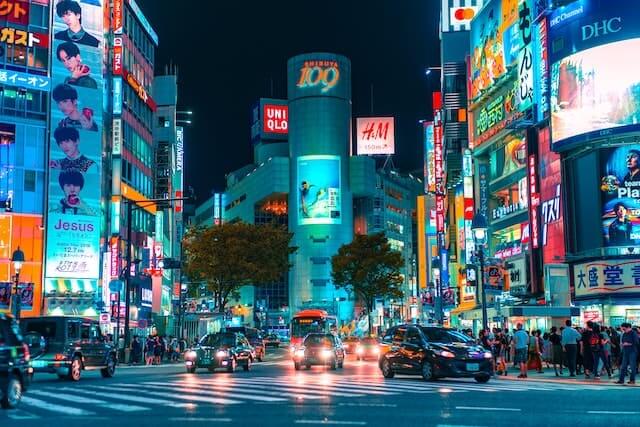
Shibuya Scramble Crossing is one of the most famous tourist spots and is known around the world as an icon of Tokyo.
There are fewer people out in Shibuya due to the COVID-19 pandemic, but you will still most likely see the largest number of people crossing a street than you ever have before.
During peak hours, there can be as many as 3,000 people crossing the street at once, and it is estimated that 500,000 people use Shibuya Scramble Crossing in a single day.
The street was named the “Scramble” Crossing due to the chaos of the sheer number of people. It might be hard for you to wrap your head around, even if you experience it firsthand.
Shibuya Scramble Crossing will be right in front of you when you leave Shibuya Station through the Hachiko Exit.
For those who are not familiar with the story, Hachiko was the name of a loyal dog that continued to commute to Shibuya Station for 10 years after his owner died.
Hachiko has become a symbol of Shibuya (there is a statue right outside the Hachiko Exit) and the dog’s story is well-known in Japan as well as overseas.
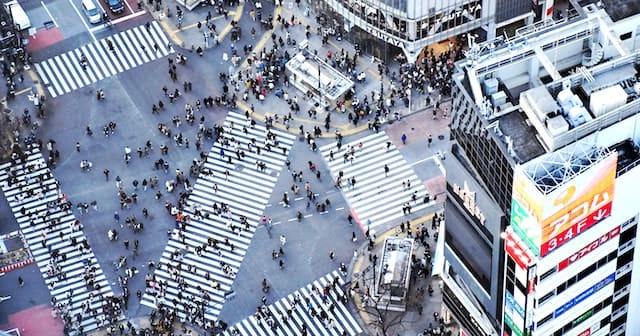
We assume you want the experience of walking across the street or taking pictures in the middle of the crosswalk, but you can also find a good view of the crosswalk on the higher floors of the shopping center across the street from the station. There is a Starbucks in the building where you can find a window seat and watch the people down below.
Information
- Open free to the public
4. teamLab
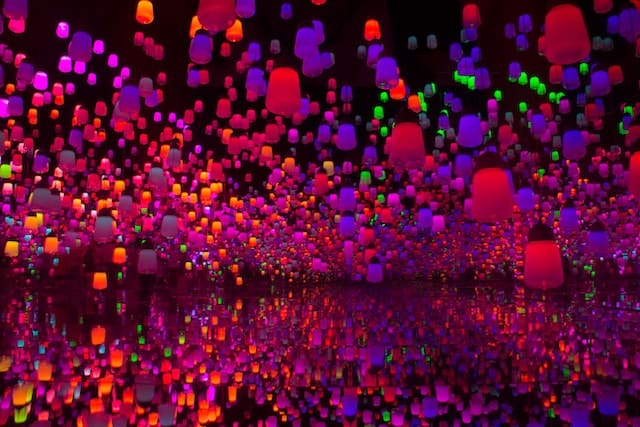
The art galleries produced by teamLab are popular Instagram picture spots for Japanese people. There are many interactive exhibits, making it an experience that both children and adults can enjoy.
teamLab produces state-of-the-art digital art, so those who are interested in things like optical illusions and animation should give the gallery in Azabudai Hills a visit.
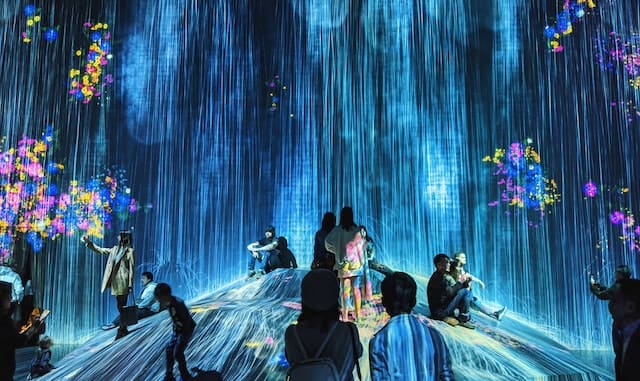
The teamLab exhibit is always crowded, and there will be many instances where you have to stand in line. To avoid crowds, we recommend visiting on a weekday and buying your tickets ahead of time.
Update: The teamLab Borderless location in Odaiba closed in August 2022 and has moved to Azabudai Hills (opened in 2024).
Information
- Hours of operation: 10:00 am to 9:00 pm
- Tickets: Adult – From 3,600 JPY (prices fluctuate depending on the day/season)
- Location: 15-minute walk from Roppongi Station or Azabujūban Station
- Website: https://www.teamlab.art/e/tokyo/
5. Tokyo Metropolitan Government Building Observatories
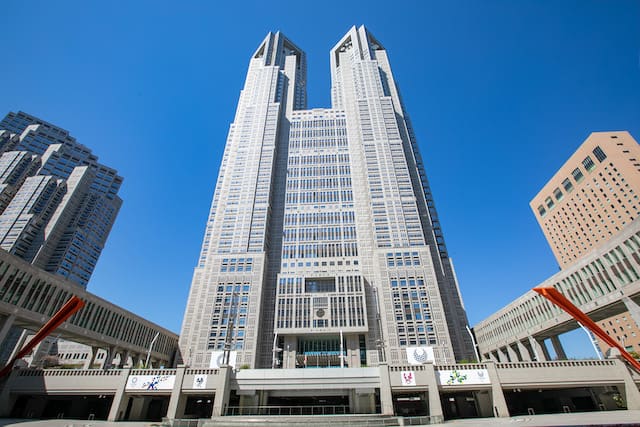
Did you know that there is a place where you can see the cityscapes of Tokyo for free? By taking a 10-minute walk from Shinjuku Station, you can make your way up to the top of the Metropolitan Government Building.
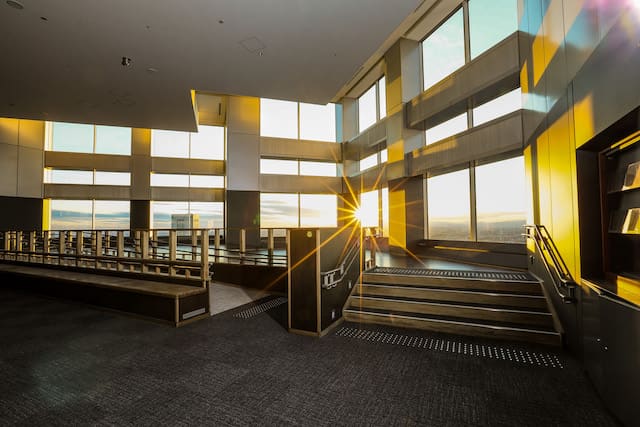
From the observatories, you can see landmarks like Tokyo Skytree, Tokyo Tower, and Shinjuku Park Tower. On days with nice weather, it is even possible to see Mt. Fuji.
There is a shop to buy souvenirs as well.
The Metropolitan Government Building makes a great place to visit for those looking to explore Tokyo on a budget.
Information
- Hours of operation: South Observation Room – 10:00 am to 8:00 pm, North Observation Room – 10:00 am to 5:30 pm
- Admission fee: None
- Location: 10-minute walk from the West Exit of Shinjuku Station
- Website: https://www.tokyo.lg.jp/tenbou
Have you booked your SIM card or pocket WiFi for your trip to Japan yet?
In Japan, you’ll want to be connected without missing out on high speed data and internet!
By reserving online before departing, you can
- Lower your rental fees
- Avoid stock shortages at the airport
To learn more about data and WiFi options for your trip, check out our products below.
6. Tsukiji Market
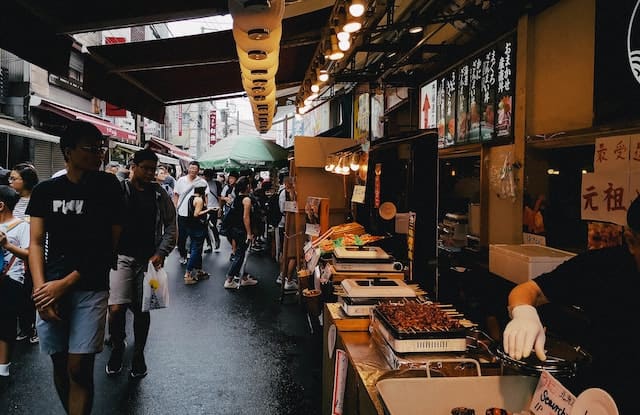
Tsukiji Market used to be the largest seafood market in the world before moving to its current location in Toyosu in 2018.
You might know it as a famous spot for tourists, but you can also experience the culture of Japan through this old-style traditional fish market.
Fresh seafood including tuna, salmon, oysters, and sea urchins can be found at Tsukiji Market. Aside from seafood, Tsukiji Market also sells meat and “tsukemono,” or pickled vegetables.
Popular among tourists and locals alike, the market can get very crowded. If you are looking to eat the freshest fish while also steering clear of the crowds, it is recommended to go early in the morning.
Information
- Hours of operation: 6:00 am ~
- Location: 1-minute walk from Tsukiji Station or Tsukijishijo Station
- Website: https://www.tsukiji.or.jp
7. Asakusa (Sensoji)
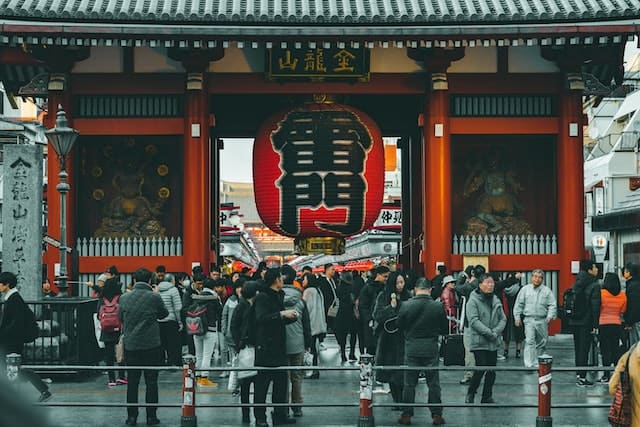
Sensoji is the most famous Buddhist temple in Tokyo. You can find it a quick five-minute walk from Asakusa Station. Past the temple gate, there is a long shopping street that sells all kinds of street foods and souvenirs.
Although the surrounding city is modern, Sensoji has a traditional feel, making it a popular spot for those who want to explore the older side of Japan.
You can experience the rituals that come with visiting a temple-like washing your hands and buying “omamori,” or Japanese amulets that provide good fortune when gifted to others.
The first temple visit of the year is an important event for Japanese people, so if you are visiting Japan around New Year’s, be sure to stop by to pull your fortune and make your New Year’s wishes.
The Asakusa area has many shops where you can rent yukata. It might be a good idea to rent one and go for a walk around town.
Information
- Open free to the public
8. Ghibli Museum
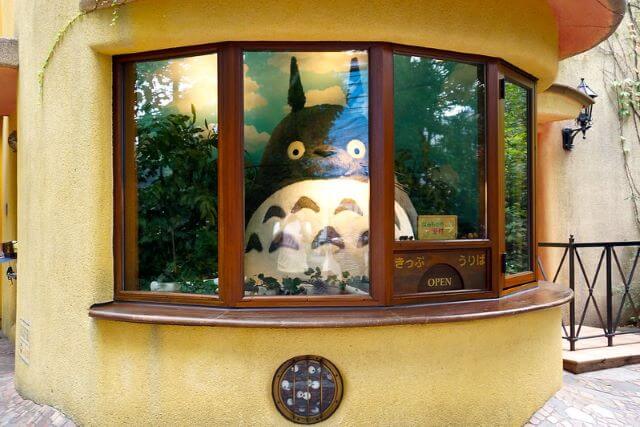
Ghibli is an animation studio that is known worldwide whether or not you watch anime. If you are a fan of the movies, we recommend that you visit the Ghibli Museum. It might feel as if you have entered one of your favorite childhood movies.
An interesting part of the Ghibli Museum is that you can see even more than the worlds of your beloved characters. The museum also showcases Miyazaki’s creative process, replicas, and themed food and souvenirs of Ghibli characters.
Photography in the museum is off-limits and securing tickets is difficult. There are even times when the tickets sell out months in advance, so keep your eyes on the website if you are interested in going.
Information
- Hours of operation: 10:00 am to 6:00 pm
- Admission fee: Ages 19 and over – 1,000 JPY, Ages 13 to 18 – 700 JPY, Ages 7 to 12 – 400 JPY, Ages 4 to 6 – 100 JPY, Ages 3 and under – Free
- Location: 15-minute walk from Mitaka Station (5-minute bus ride)
- Website: https://www.ghibli-museum.jp
↑ Go back to the table of contents
Unique streets
When you visit, you’ll find that Tokyo is a bit different depending on where you are in the city. In this section, we will be introducing some of the towns that will give you a different taste of Tokyo.
1. Kabukicho
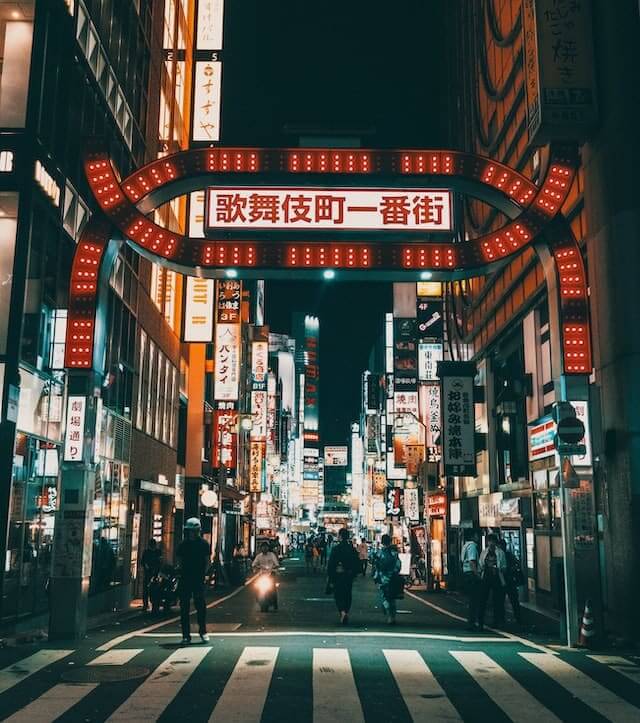
Kabukicho is the center of nightlife in Tokyo. If the aim of your trip to Japan is to enjoy the party life, you will definitely want to visit.
“The city that never sleeps” is not an exaggeration when it comes to Kabukicho, which is constantly lit up and moving with bars, clubs, and restaurants.
Close by, there is an area called Shinjuku Golden Gai, a series of alleyways lined with around 300 hole-in-the-wall bars.
The classic way to enjoy Golden Gai is to bar hop throughout the night and enjoy the alcohol and new connections along the way.
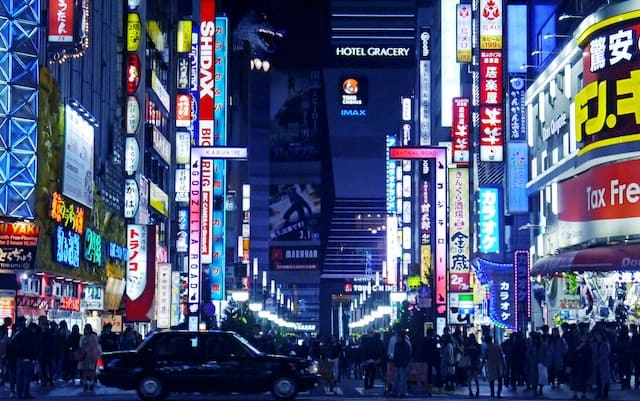
Unrelated to the nightlife, Kabukicho has a giant statue of Godzilla peeking over the top of a large movie theater; don’t forget to take a picture while you’re there!
2. Ginza
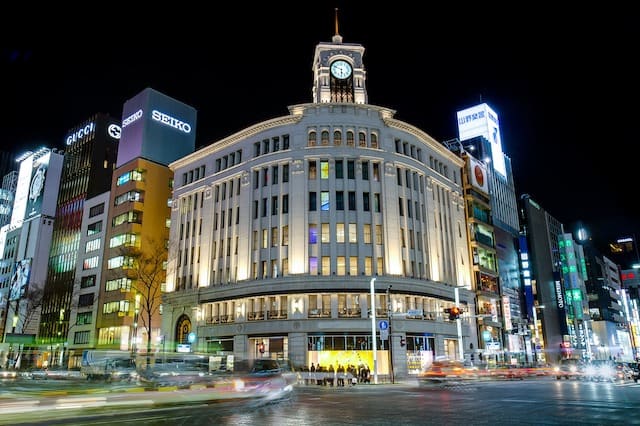
With high-class brands everywhere you look, Ginza is known as a shopping paradise for both tourists and residents. Aside from the high-end shops, there are also Japanese brands familiar to those overseas like Uniqlo and GU.
On the weekends, Ginza opens the streets where cars would normally run to pedestrians. Even if you are not looking to buy anything, Ginza is a great area to people watch, get a feel of the “rich” side of Tokyo, and window shop.
3. Harajuku (Takeshita Street)
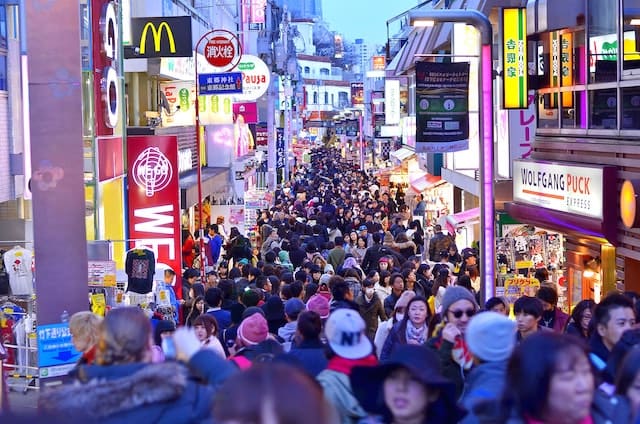
An area called Takeshita Street is the most noteworthy place of Harajuku. It is a chaotic mess of colors with an endless stream of people heading both up and down the street, crazy fashion, restaurants, and accessory shops.
The types of shops make it most popular among middle school and high school girls but it is also the perfect place to find out what Japan’s “kawaii” culture is all about.
There are many shops and restaurants to visit, so you will not be bored while wandering in Harajuku. You can try street food that is popular among young students like fruit crepes and colorful cotton candy.
4. Akihabara
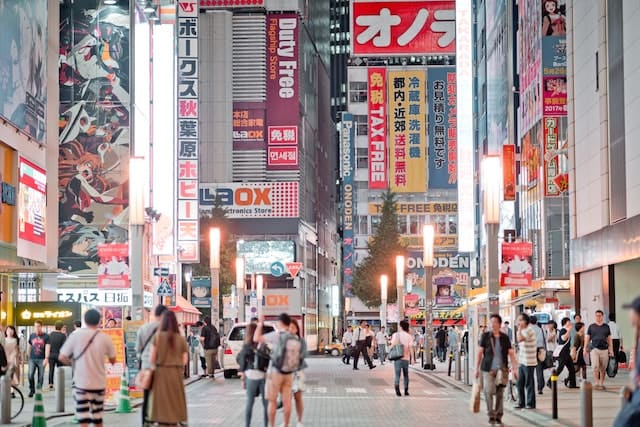
Being the center of anime and manga culture, it is hard to know Tokyo without Akihabara. If you are a fan of Japanese subculture, Akihabara is your paradise.
Character merchandise, retro video game stores, and anime specialty shops are just a few of the establishments to keep you entertained.
Maid cafes are also unique to Japan and you can find maid girls lining the streets of Akihabara passing out flyers. Following one of them or venturing into a maid cafe yourself might become an experience you won’t forget.
Akihabara continues to be known as a hotspot to buy electronics, so even if you are not interested in anime or manga, you might be able to find electronics or parts for budget prices.
5. Kichijoji
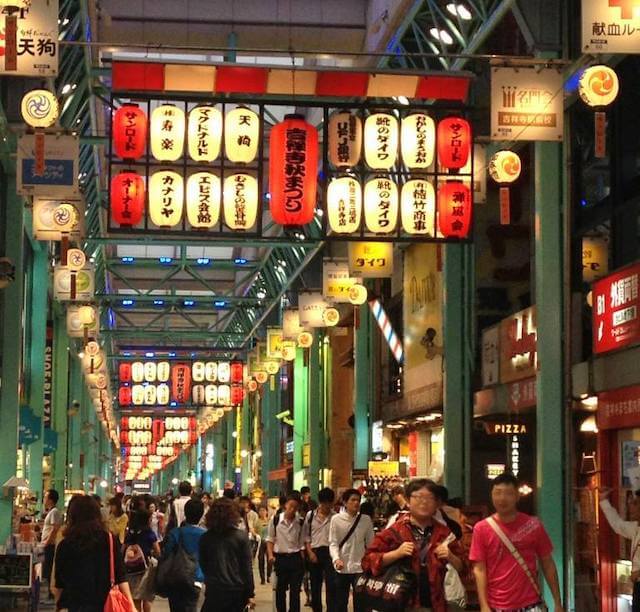
Although not very well known among travelers, Kichijoji is an area that is popular among locals. Kichijoji has everything you could possibly need to keep you entertained, from arcades and shopping malls to unique local restaurants and bars. For many years in a row, Kichijoji has made the list of “Most popular cities to live in Tokyo”.
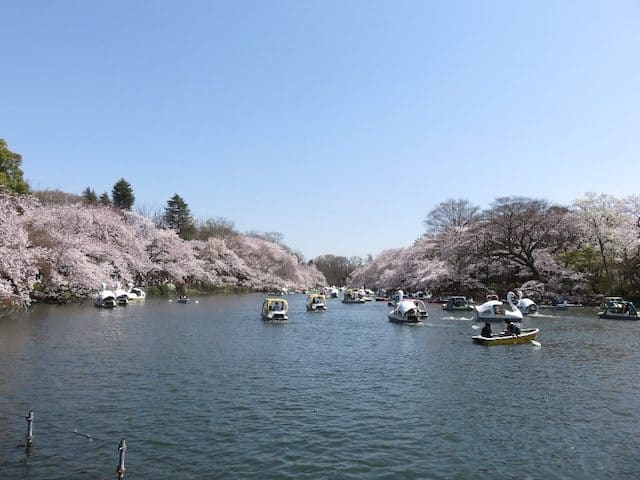
A popular spot almost as well-known as Ueno or Meguro for sakura viewing, Inokashira Park is a quick walk from Kichijoji Station. In the middle of the park is a large lake; you can rent a boat or take a walk around.
6. Shimokitazawa
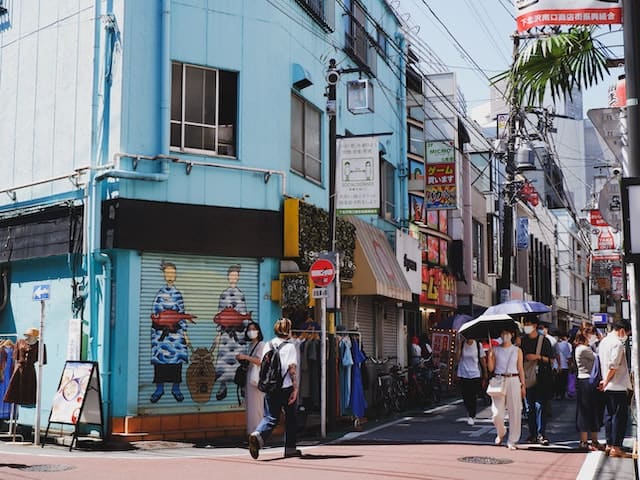
Located a quick train ride from Shibuya or Shinjuku, you will be able to find vintage clothing, unique restaurants, cafes, and other local establishments.
Because it is not as crowded as the central parts of Tokyo, Shimokitazawa is the perfect place to experience Tokyo’s fashion, music, art, and subculture.
Shimokitazawa is the “hippy” town of Tokyo. There are several used and retro clothing shops in the area, and when you get tired there are lots of cafes for you to take a rest.
“Curry SAMURAI” is a well-known restaurant where you can try soup curry filled with vegetables, a dish that is specific to Hokkaido.
↑ Go back to the table of contents
Unique things to do
Finally, we will be introducing some activities that are loved by tourists and residents alike. These unique things are sure to enrich your experience in Tokyo.
1. Stay in a capsule hotel
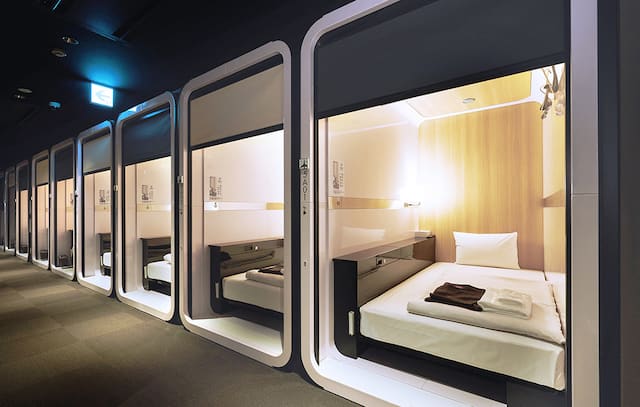
A capsule refers to a tiny room in which to spend the night. Inside the capsule, you can find an AC, a light, outlets, and anything else you might find in a regular hotel room, all confined to a small 2 x 1 x 1-meter space.
When you miss the last train in Tokyo, it is not uncommon to stay at a capsule hotel. However, in recent years, the concept has become popular among tourists as something that you have to try when visiting Japan.
Because of the compact image, you might think that there is nothing to do but sleep in a capsule hotel. In fact, some hotels have other accommodations such as large public baths, saunas, and lounges.
Below, we have included some suggestions as to where to stay if you want to try out a capsule hotel.
Recommended capsule hotels
2. Soak in an onsen

Some of you might think of hot springs, or “onsen” when you think of Japan. Onsen have lots of health and beauty benefits. Relaxation is a large part of why people visit an onsen, but there are also aspects of Japanese culture to be felt when visiting.
Surprisingly, there are lots of rules that you must follow just to take a bath, so it could be an interesting experience to learn about all the traditions of the onsen during your trip.
There are many famous onsen in Japan in places such as Gunma, Hakone, and Beppu, but there are places you can enjoy without having to travel long distances. Thermae-Yu is an example of an onsen located in Shinjuku that even has an outdoor bath.
Thermae-Yu is accepting of tattoos and will let you enter the bath after you have put on a tattoo concealer.
Information
- Hours of operation: Open 24 hours
- Location: 9-minute walk from JR Shinjuku Station
- Website: https://thermae-yu.jp/
3. Sing your heart out at karaoke
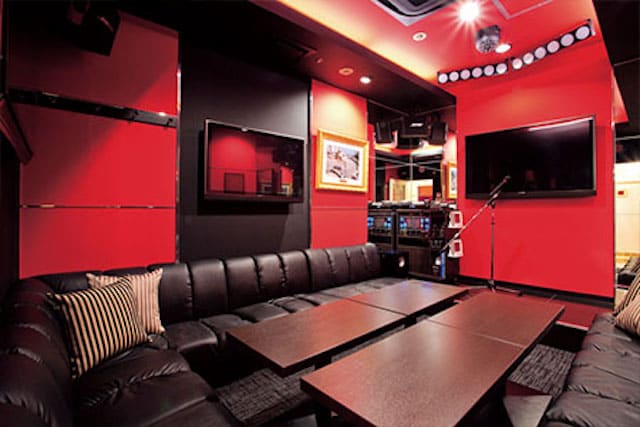
Karaoke Maneki Neko, Karaoke-kan, Karaoke Ban Ban, Karaoke Room Utahiroba, and the list goes on… These are just a few of the chains of karaoke shops that can be found in Tokyo.
You might be surprised at the sheer amount of them when you walk through town. It would not even be a surprise to be told that Japanese people can carry a tune better than most because they get so much practice at karaoke. It is not uncommon to go by yourself, either.
Charging by the half-hour or going in for a set price for a long amount of time, karaoke shops make their money off customers who come searching for their own private room to sing in. If you go up to the counter and tell them how long you want to sing for, you’re all set to go.
4. Go bar hopping
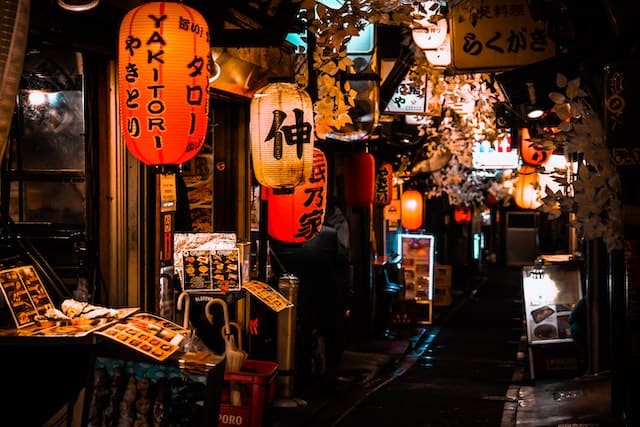
Going to an izakaya (Japanese-style pub) is a must when you are on a trip to Japan. It is custom for Japanese people to go out to these pubs together after work with coworkers or with friends.
In Japan, it is called a “nomikai,” to get together and drink alcohol. It would not be an exaggeration to even call this part of the culture of Japan, as it is so ingrained in modern society.
To get the neighborhood izakaya experience, you might want to visit Omoide Yokocho, an area in Shinjuku that features lots of local izakaya. You can try “yakitori,” grilled chicken skewers, or walk around the old buildings and low-lit alleyways to take pictures.
5. Drive around town in a Go-Kart
View this post on Instagram
Have you ever played a certain racing game and thought to yourself that it would be fun to try in real life? This dream can become a reality when you visit Tokyo.
Some companies allow you (with a valid driver’s license) to drive a tiny open go-kart. They even offer costumes so you can ride around the city in style!
Companies that offer Go-Karting
6. Play with owls at an owl cafe

You might have heard about cat and dog cafes, but have you ever heard of an owl cafe? There are many owl cafes in Tokyo, but we will be focusing on a shop called, “Owl Cafe Akiba Fukurou“.
Owl Cafe Akiba Fukurou is a three-minute walk from Akihabara Station. There are 40 owls in the shop, including types that you would not normally be able to see, much less touch or hold.
There are not many places where you can experience an owl cafe in the world, so we recommend you pay them a visit.
Information
- Hours of operation: Weekdays – 12:00 pm to 6:00 pm, Weekends – 12:00 pm to 7:00 pm
- Closed on: Tuesdays
- Pricing: 2,000 JPY
- Location: 3-minute walk from Akihabara Station
- Website: https://akiba2960.com/
7. Eat ramen alone at Ichiran
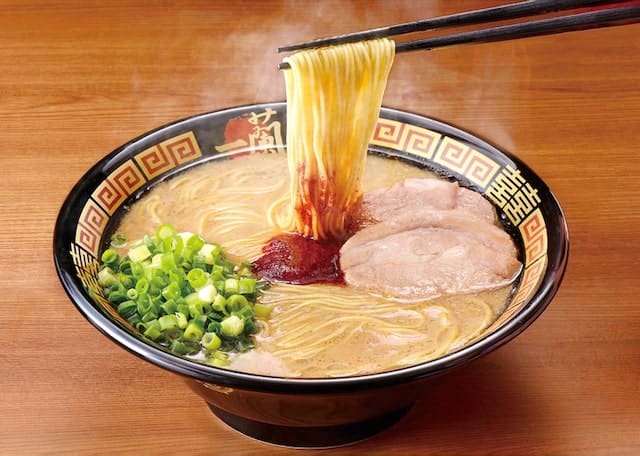
Ichiran is a ramen shop that became well-known for its concept. There are barriers between each of the seats, giving the impression that you are eating completely alone.
You order your ramen from a ticket machine and have no communication with the servers.
Before handing over the ticket that has your order on it, you personalize your ramen from the stiffness of the noodles to the soup and toppings. In the current pandemic, you might find that Ichiran provides a safe experience to eat out.
It is not only the concept of the store that makes this ramen unique; Ichiran is well-known for its strong flavor of ramen, and there is constantly a line of customers waiting to get in.
8. Try fluffy pancakes
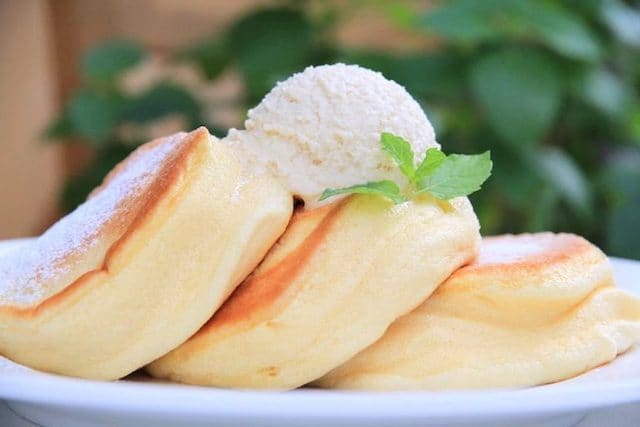
Pancakes are a popular afternoon snack for young people in Japan. If you keep your eyes out, you will see that there are lots of pancake shops in and around the city.
However, these might look a little different than the pancakes you are used to.
The kind of pancakes that grew in popularity in Japan are the kind so fluffy they practically melt in your mouth. If you like sweets, you should make it a point to try them before you leave.
Restaurants that serve fluffy pancakes
↑ Go back to the table of contents
Conclusion
What did you think? We tried to include as many types of activities for those with all different interests.
Tokyo has a lot to offer in terms of sightseeing, as well as just everyday fun. We hope that this article gave you some ideas on how to explore the city!
Have you booked your SIM card or pocket WiFi for your trip to Japan yet?
In Japan, you’ll want to be connected without missing out on high speed data and internet!
By reserving online before departing, you can
- Lower your rental fees
- Avoid stock shortages at the airport
To learn more about data and WiFi options for your trip, check out our products below.
CUSTOMER’S VOICE

